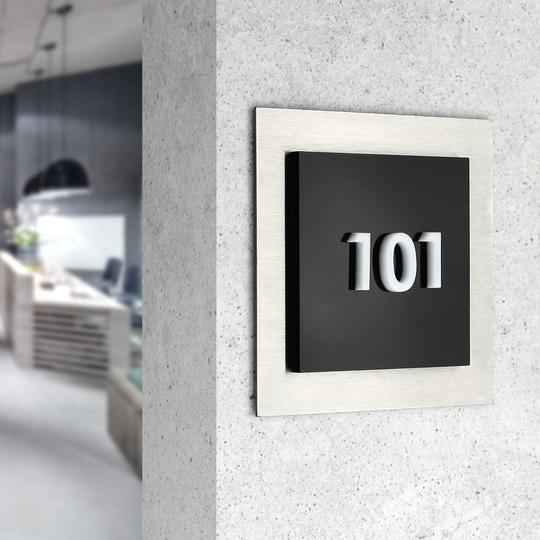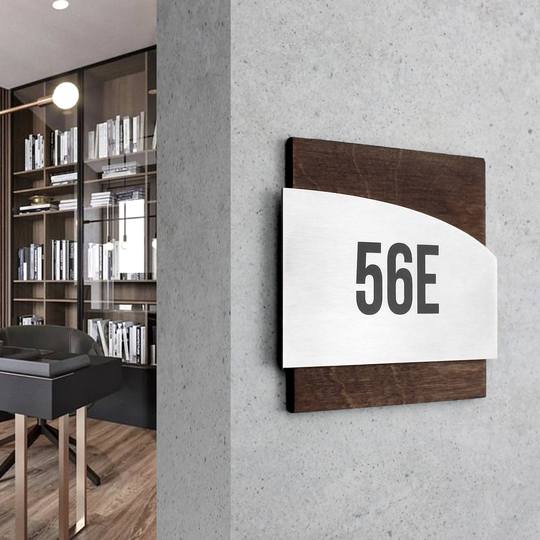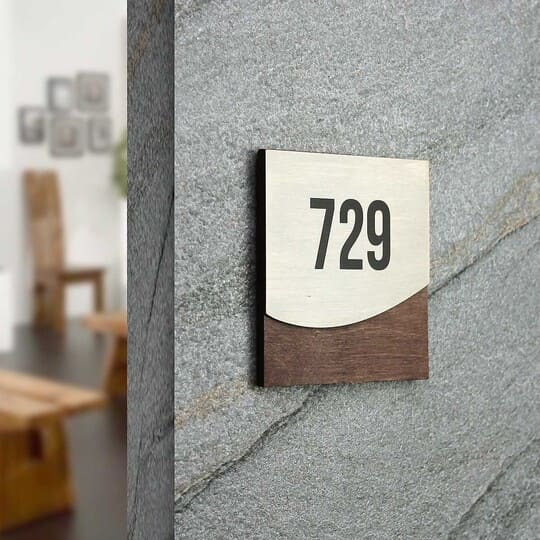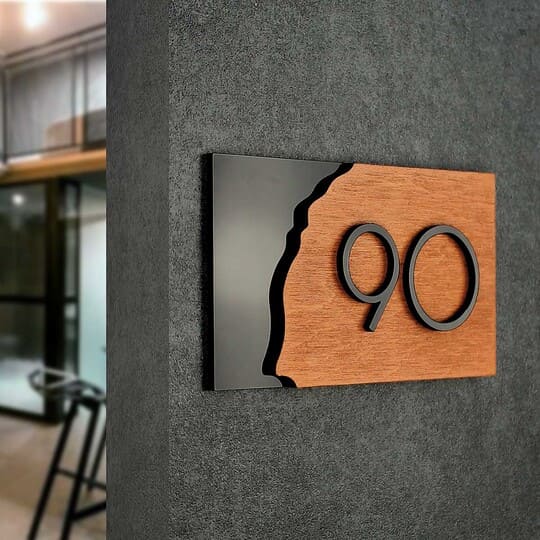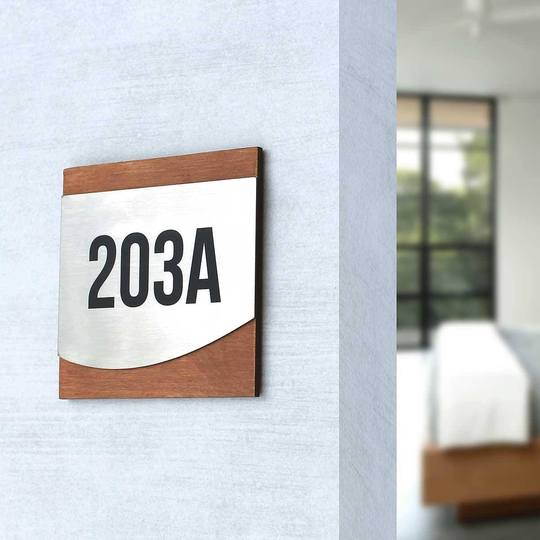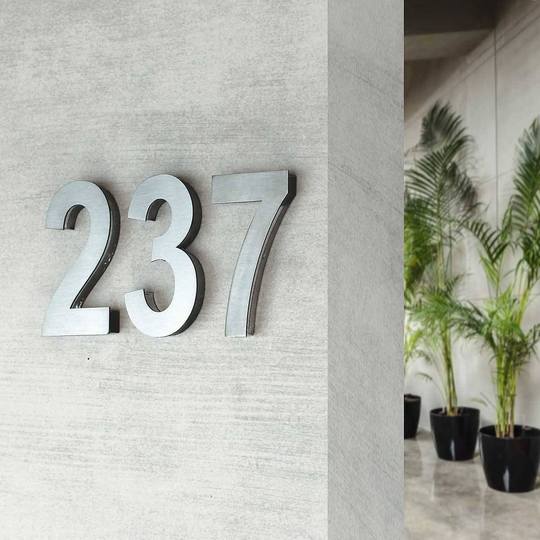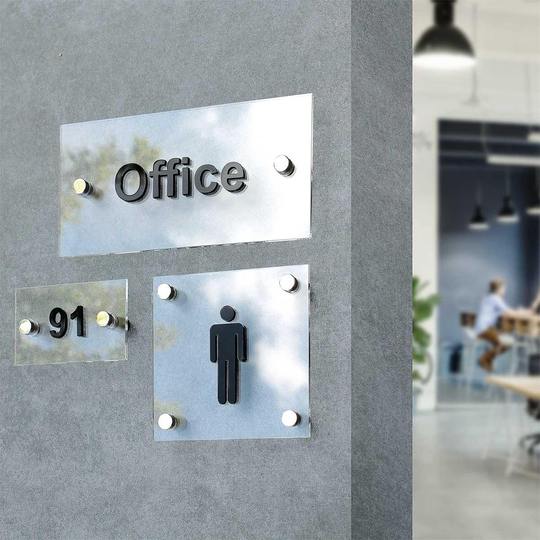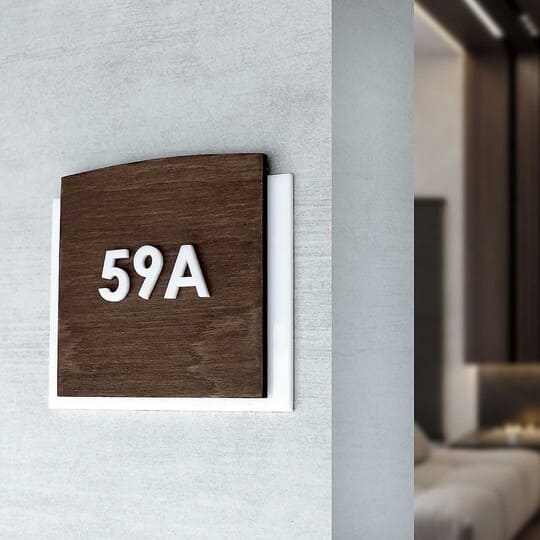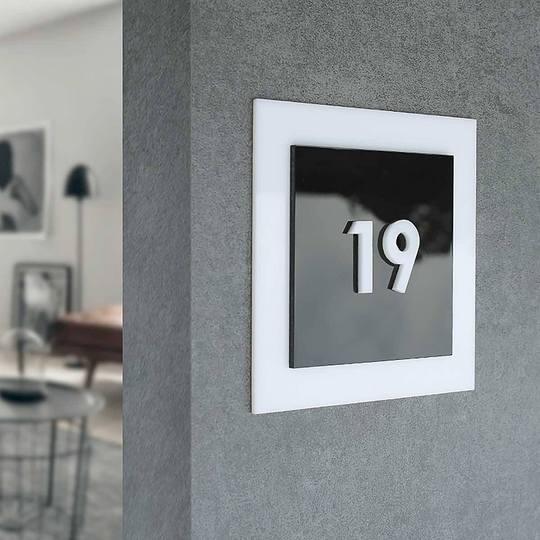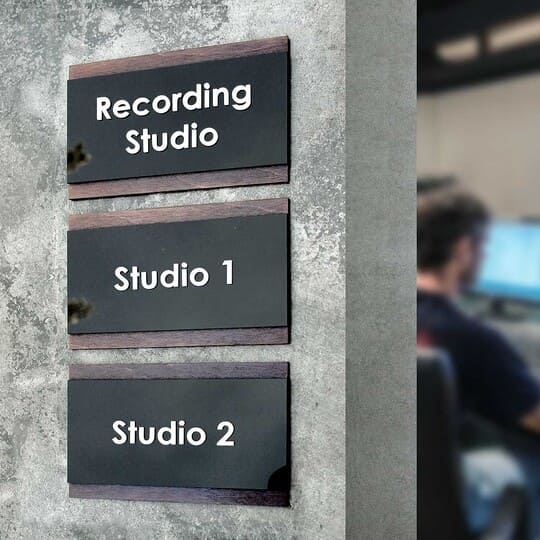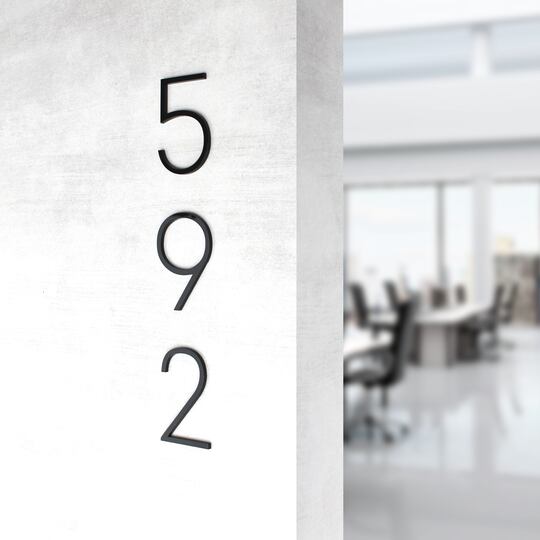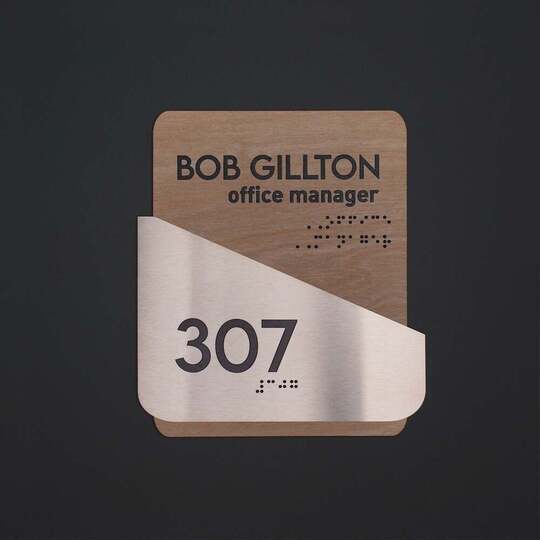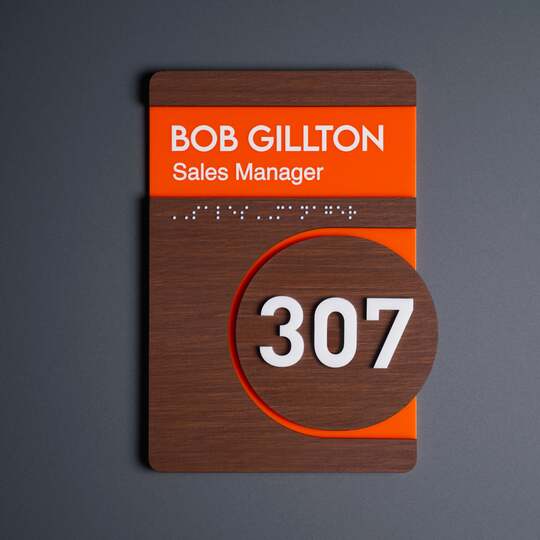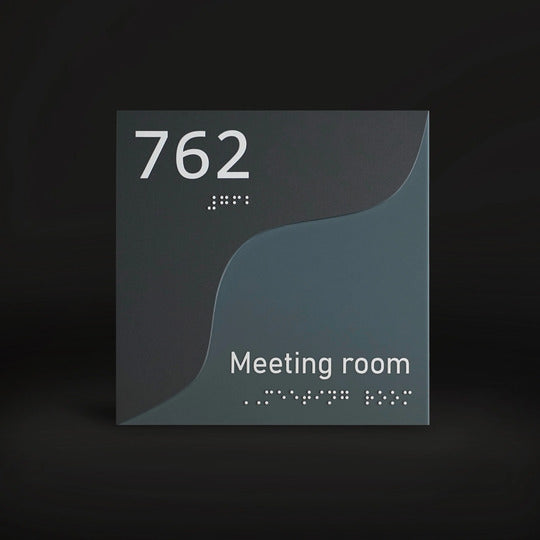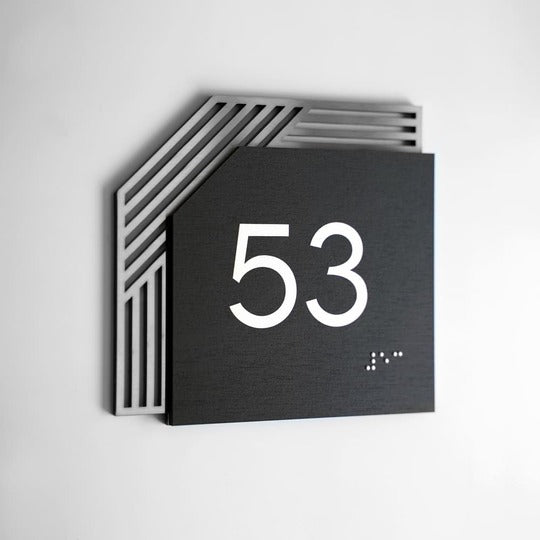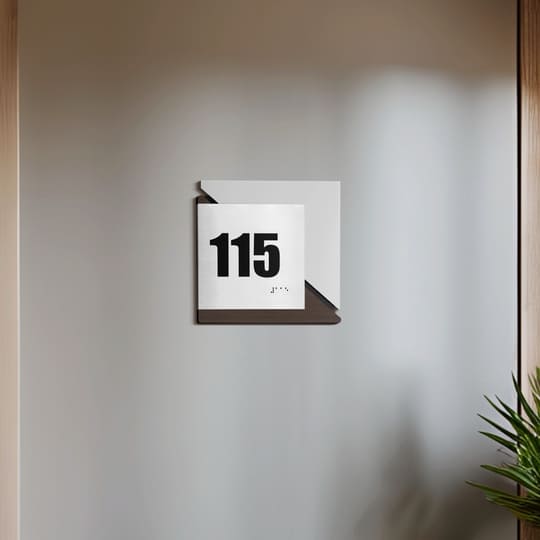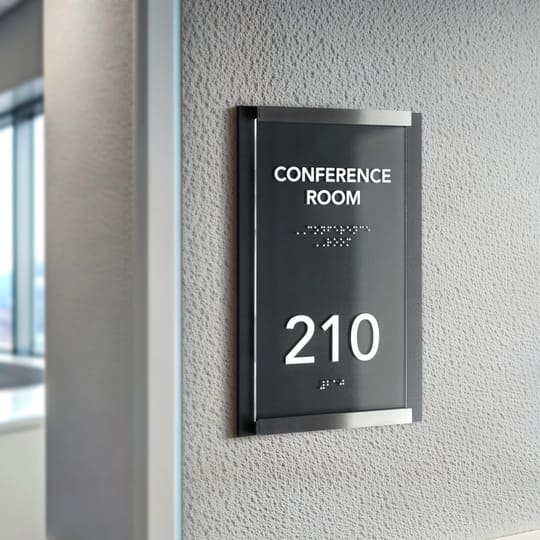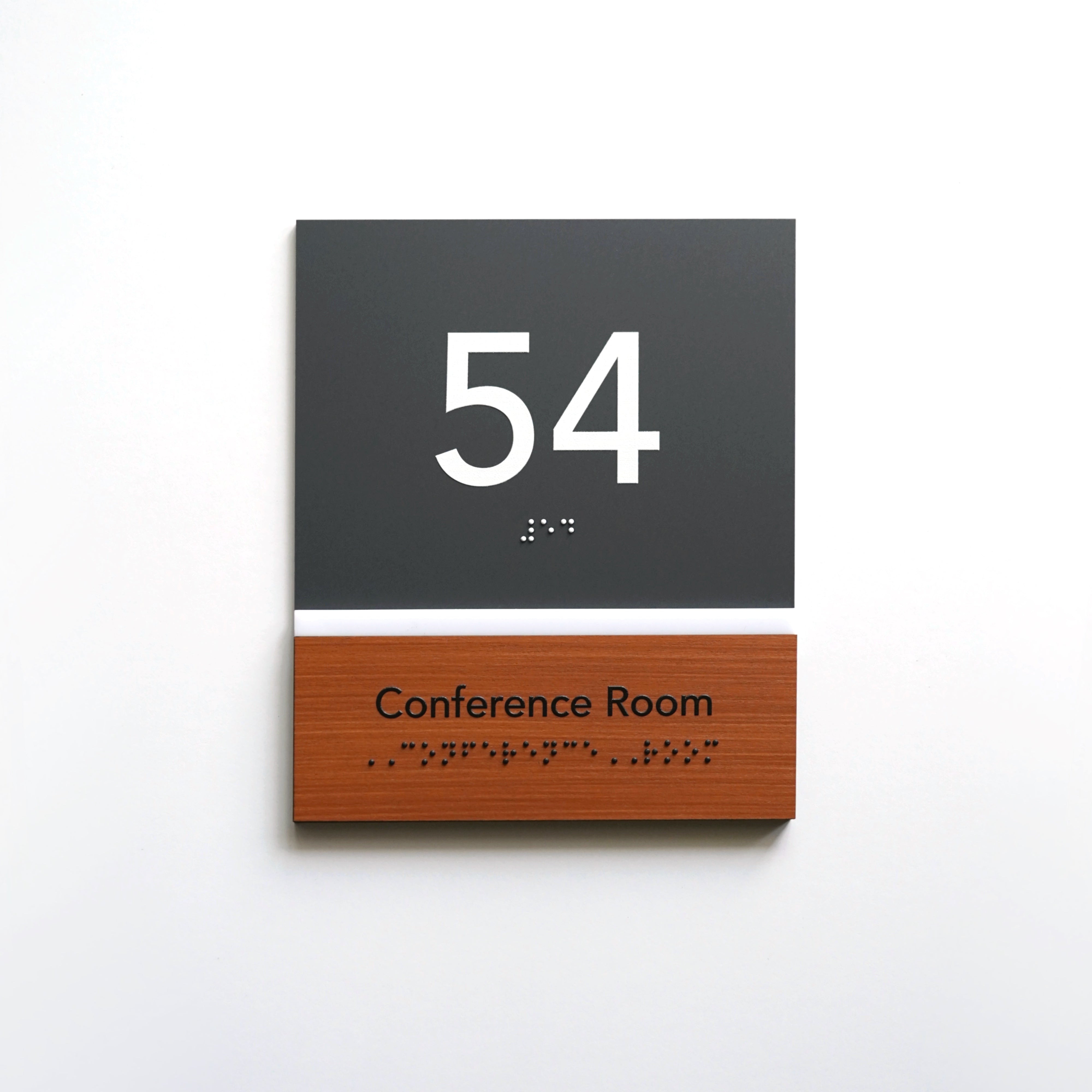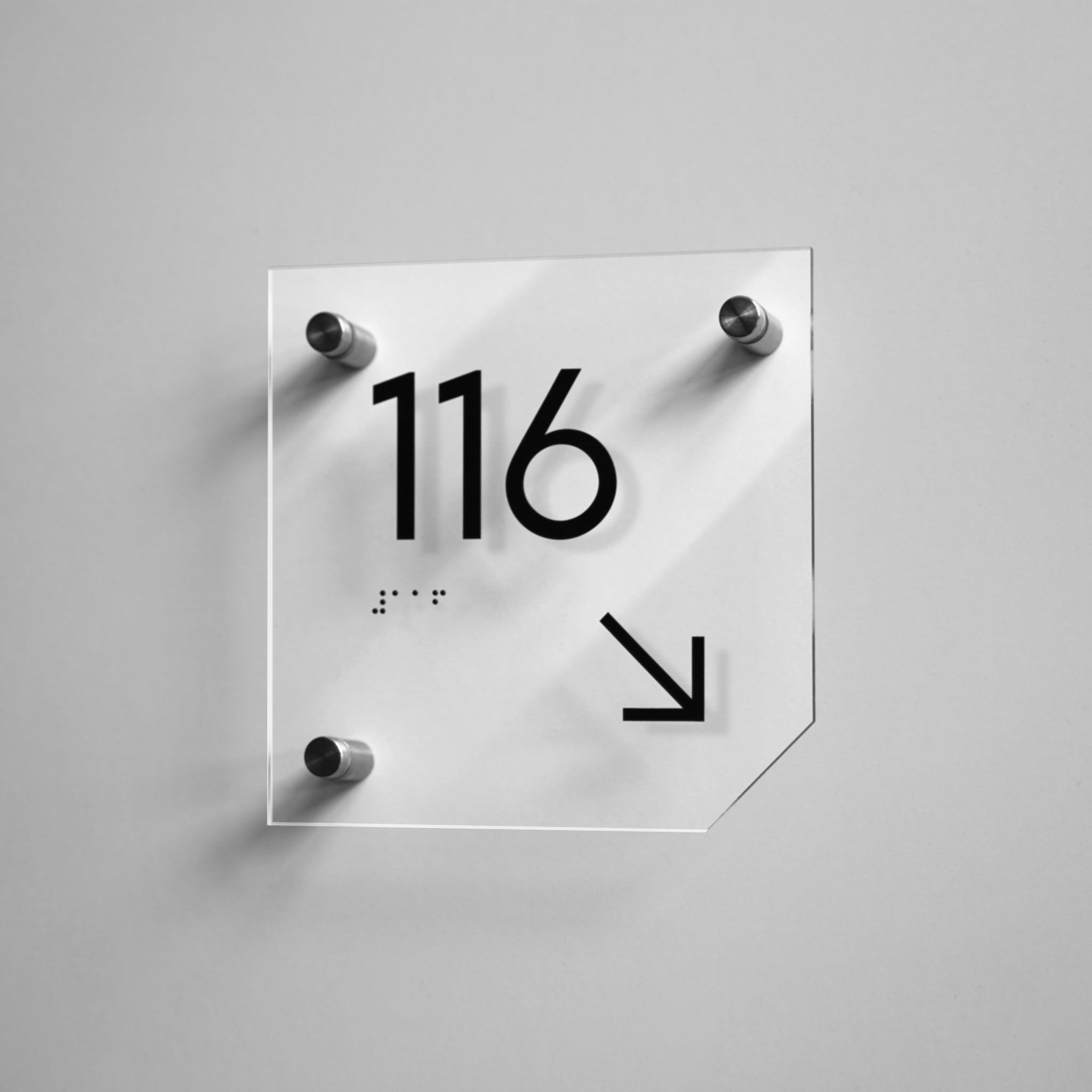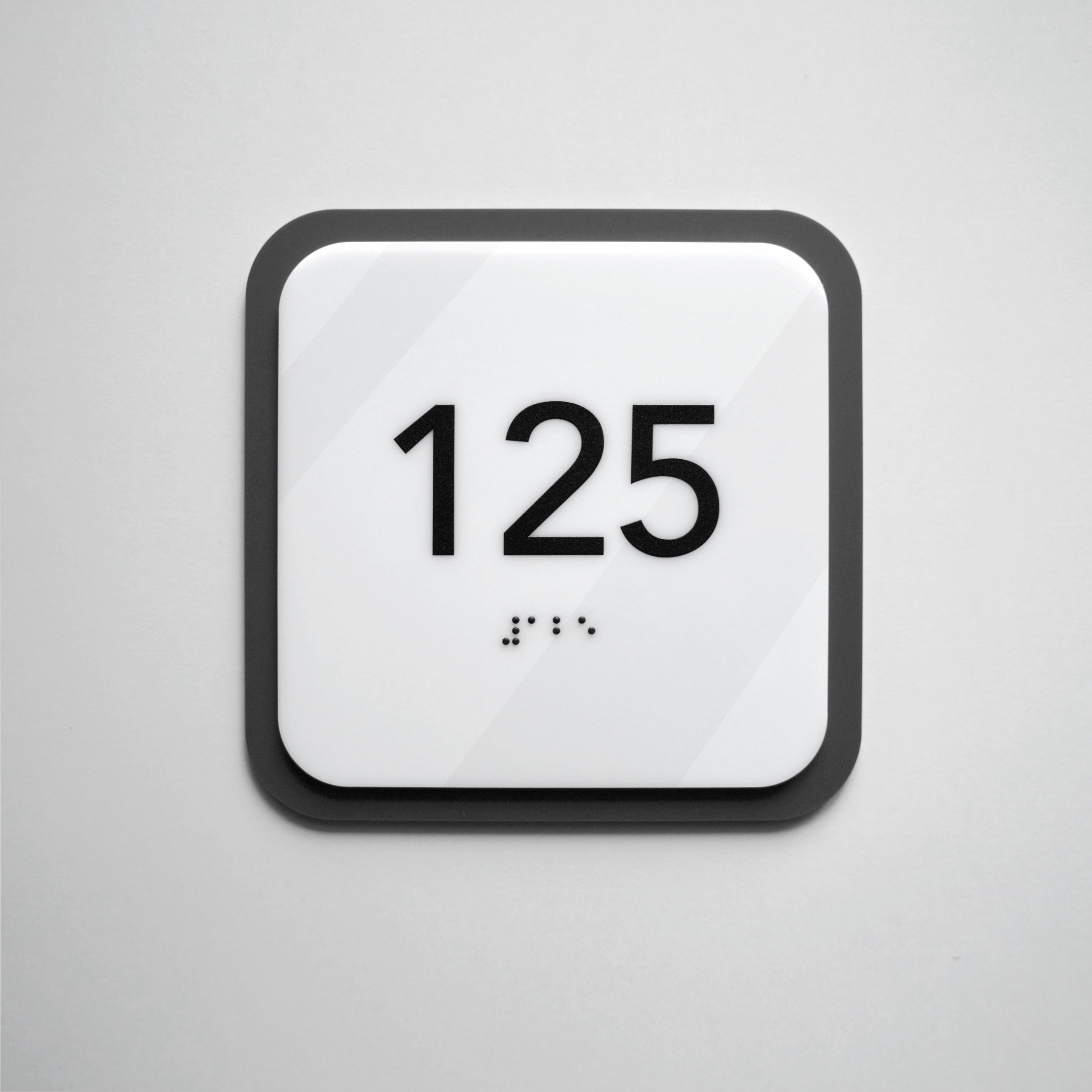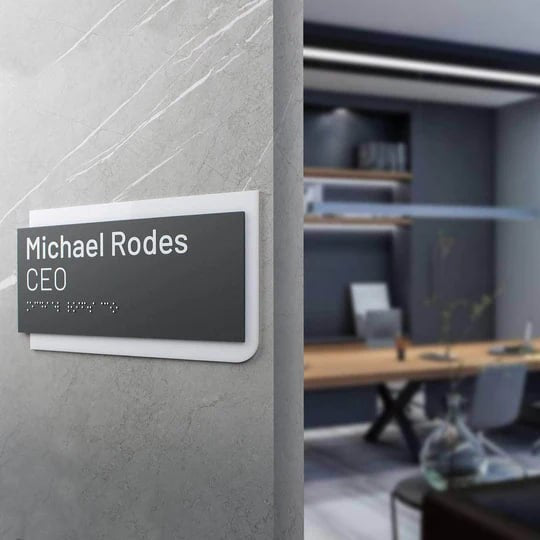
Choosing the right materials for restaurant and cafe signage design
In the HoReCa industry, it’s the little things that shape the first impression. Guests rarely remember the reception desk or the door handles in detail, but from the very first moment they notice the overall atmosphere, often created by small, nearly invisible elements. These details are the foundation of a restaurant's atmosphere.
Directional signs, including door numbers, are an integral part of a restaurant's identity. They can either reinforce the interior concept or completely undermine it. Picture a modern café with a stylish interior but cheap-looking plate — suddenly, the concept feels diluted, along with the sense of care for detail.
By contrast, signage materials such as wood, acrylic, or stainless steel can transform a simple number plate into a high quality signage design that attracts customers, enhances brand individuality, and elevates the guest experience. In this article, we’ll explore why these particular materials are the best fit for modern restaurants, cafes, and coffee shops aiming to rise above the ordinary — and explain how to choose a solution that emphasizes your venue’s unique style.

Role of plates in HoReCa: when small details matter more than scale
Well-considered decor elements, like signage in HoReCa spaces, create a lasting impression long before a guest places their order. They work on a subconscious level, evoking a sense of care, attention to detail, and consideration for guest comfort.
Cafeteria signs help guests easily navigate the space, which directly affects the customer experience. Guests appreciate when they don’t have to ask staff where the restroom or a particular hall is, because all the information is already clear and harmoniously integrated into the interior.
They become a vital part of the overall design, reinforcing the restaurant’s identity. In some concepts, such details can even act as a centerpiece that ties together the style, color scheme, and brand philosophy.
Well-designed coffee shop signs can create a special atmosphere of coziness, warmth, and hospitality — or, conversely, convey the spirit of modernity and dynamism through retro aesthetics or minimalist visual language — it all depends on the chosen style.
Aesthetic signs help build brand awareness. Sometimes, a few carefully chosen details can make a stronger emotional impact than a large-scale redesign of a restaurant's interior.

Requirements for signage materials in the HoReCa industry
In restaurants and cafes, interior elements need to do much more than simply provide information. Unlike in offices or standard public spaces, hospitality signs must meet strict practical requirements because they operate in far more demanding conditions.
Resistance to moisture, wear, tear, and cleaning is one of the main requirements. Plates are often placed in high-foot-traffic areas where they are constantly touched, wiped, or cleaned during sanitation routines. Materials should remain tidy and maintain image clarity even after hundreds of cleaning cycles.
Equally important is the alignment of visual appeal with the restaurant’s identity and overall decor. Colors, shades, textures, and style should harmonize with the cafe interior design. Every detail is important here, from the choice of font (for example, modern sans serif fonts) to precise edge finishing, because even the smallest mismatch can break the concept’s integrity and reduce the overall impression.
Ease of maintenance and reliable mounting are also crucial. The ideal solution is water-resistant signs that can be quickly cleaned without special products while keeping the surface intact. Mounting should withstand frequent contact and occasional bumps while preserving a clean, professional appearance, as is the case with metal holders, which add neatness and durability to the structure.
Compliance with these requirements guarantees not only a long service life of the plates, but also reduces replacement costs, while maintaining high contrast and visibility of information. As a result, such elements not only fulfill their function, but also become lasting design elements that enhance the restaurant atmosphere and customer experience for years to come.
Stainless steel signs — status and durability
-
• Stainless steel plates are among the most durable plates available. Resistant to scratches, mechanical impact, and corrosion, they’re ideal for high foot traffic zones in restaurants.
-
• Their texture and color lend the plate a luxurious feel, adding a sense of stability and quality to the interior. They elevate the restaurant’s ambiance, reinforcing a sense of prestige and exclusivity. This is especially valuable for luxury signage in fine-dining restaurants or hospitality businesses targeting discerning customers. In such spaces, high-quality custom brand identity plates work as a marker of uncompromising standards and effectively drawing attention to details.
-
• Easy to maintain: the surface cleans effortlessly, retains its shine, and never loses its professional finish, even after heavy use. As a result, information plates and directional plates remain tidy, functional, and visually appealing over the long term.

Acrylic signage: brightness, shape accuracy, accent capabilities
-
• Acrylic offers almost unlimited opportunities to create visual accents thanks to its ability to deliver saturated tones, and crisp contrasts. Vibrant colors enhance the visual appeal of the space and allow you to convey the message as clearly as possible.
-
• This material excels at showcasing small details, graphics and logos, which makes it especially convenient for branding. It’s an ideal choice for QR code signs, or any information that may need regular updates.
-
• The material is lightweight, easy to install and at the same time quite durable. Its water-resistant qualities allow it to withstand moisture, wear, and frequent cleaning, ensuring it retains its professional look even in cafes and restaurants with high guest flow.

Wooden signs — coziness, naturalness, tactility
-
• Wooden plates bring a sense of warmth and naturalness to the space. Crafted from natural materials, they add emotional depth, instantly evoking a sense of comfort and hospitality.
-
• The unique texture of wood creates a pleasant feeling to the touch. Tactile signs made of this material combine decorativeness with functionality. These plates invite interaction — guests instinctively want to touch and examine them up close. They bring warmth, natural character, and striking visual appeal to the interior.
-
• This type of aesthetic plate works especially well in coffee shop interiors, local bistros, or atmospheric venues, because in such spaces the business is focused on creating a cozy, emotionally rich interaction with the guest.

Restaurant signage design: matching materials to interior style
Choosing the right materials is a process that takes into account functionality and their harmonious combination with the venue’s concept and style. Here it is important that every detail is appropriate and enhances the general atmosphere. Plate material and form can either emphasize the uniqueness of the interior, or, conversely, undermine the concept.
Loft-style interiors favor rawness and simplicity. Stainless steel plates, metal and steel elements with clear geometric lines and matte or slightly distressed textures work beautifully here. Minimalist signs in cooler tones complement concrete walls, exposed piping, and rough wood surfaces.
Scandinavian and classic styles aim to create coziness and a warm atmosphere. Wooden plates with soft textures, warm colors, and hand-finished details fit naturally into these environments. Decorative touches like engraving or inlays emphasize attention to detail and elevate the decor.
Fast casual formats focus on an on-the-go lifestyle and youthful audience, so the decor should be dynamic and bright. Acrylic elements work well here. These plates are easy to update, making them ideal for showcasing operating hours, promotional messages, or seasonal changes.
Premium restaurants strive to convey a sense of status and sophistication, so stainless steel plates are preferred. Such a detail immediately draws attention, but does it unobtrusively, reinforcing brand recognition and the venue’s high level.
Types of signs: choosing by purpose
Restaurants, cafés, and coffee shops use different plates, each serving a specific function. They shouldn’t be viewed merely as information carriers — they are also essential decor elements that shape restaurant ambiance, improve customer experience, and strengthen the brand’s personality. Here are the most common categories of hospitality plates used in modern venues:
-
• Restroom signs — typically designed in a clean, understated style. Their primary function is to communicate information quickly and clearly, without unnecessary visual noise.
-
• Information signs — used to display key messages for guests such as operating hours, payment policies, Wi-Fi access, or house rules. They should be visually appealing in order to draw attention immediately.
-
• Table number signs work not only as a means of organizing space, but also as an aesthetic element.
-
• Private room sign — an elegant solution that indicates exclusive or reserved areas in a restaurant. It helps maintain privacy for guests, sets the right tone for VIP service, and adds a sense of exclusivity to the venue.
-
• Outdoor signs — placed at the entrance or on the building’s façade, they serve as the first point of contact with guests.
-
• QR code signs are a modern and convenient solution for accessing menus, promotions, reviews, or social media pages. They minimize the need for physical menus, especially in fast-paced service environments.

Why you should invest in high-quality custom interior signs right now
Investments in interior elements may seem secondary compared to full-scale renovations, but the experience of successful venue owners proves that it’s often the details that shape the strongest impressions. Custom interior plates don't just act as information pointers — they become part of your brand identity, telling your brand’s story long before the first order is served.
Key benefits of investing:
-
• High-quality restaurant signage design communicates thoughtfulness and care from the moment guests walk in. When guests see attention given even to details like fonts, materials, and mounting, it creates trust and encourages repeat visits. As a result, maximum impact is achieved at minimum cost.
-
• Minimum costs — maximum effect. Unlike a full renovation, updating interior elements is a quick and budget-friendly way to refresh your space. It doesn’t require shutting down operations and can be implemented gradually, ensuring both financial and operational efficiency.
-
• Investing in custom brand identity signage creates a distinct visual code that sets you apart from competitors. It strengthens brand recognition and attracts customers — especially in the age of social media, where guests love sharing photos of spaces that surprise and delight.
-
• During grand openings or when gathering customer feedback, your plates act as miniature decor pieces that evoke emotions and become symbolic of your venue. These decor elements linger in memory and leave a warm aftertaste long after the visit.
In short, smart investment in custom interior signs is a strategic move toward building a strong, recognizable brand.

Hospitality signs: the detail that changes everything
In the HoReCa sector, restaurant interior signage serves a far greater purpose than simple navigation. They blend branding, customer experience, and aesthetics into one cohesive element. Guests notice the shape, materials, and placement. These decor elements act as silent messengers from the brand, building trust and evoking emotion.
By choosing from the most effective types of sign materials — acrylic, wooden, or stainless steel — you’re not just decorating the space. You’re creating modern signage that integrates seamlessly with your venue’s style, withstands daily wear, draws attention, and reinforces a strong brand image. This solution works for your business every day, even when you’re not thinking about it.
Whether you're exploring plate solutions cafe signs or want to know how to choose restaurant signs, start with trusted resources and get inspired by examples. They’ll help you navigate styles, materials, and approaches that truly resonate — and guide you toward a plate that not only complements your concept but becomes a signature accent of your brand.
Restaurant signs: how to combine functionality and style
Investing in aesthetic and durable signs doesn’t require a massive budget, but it carries strategic weight for the brand. It’s a smart way to refresh your space with minimal effort, highlight your venue’s personality, and create an atmosphere guests will remember. Successful interiors begin with details — the ones that spark emotion, shape first impressions, and set the tone for the entire experience.
Take the first step toward transformation today: sign up for a free consultation. We’ll help you choose high-quality decor that highlights your restaurant’s identity and meets the highest HoReCa standards.
